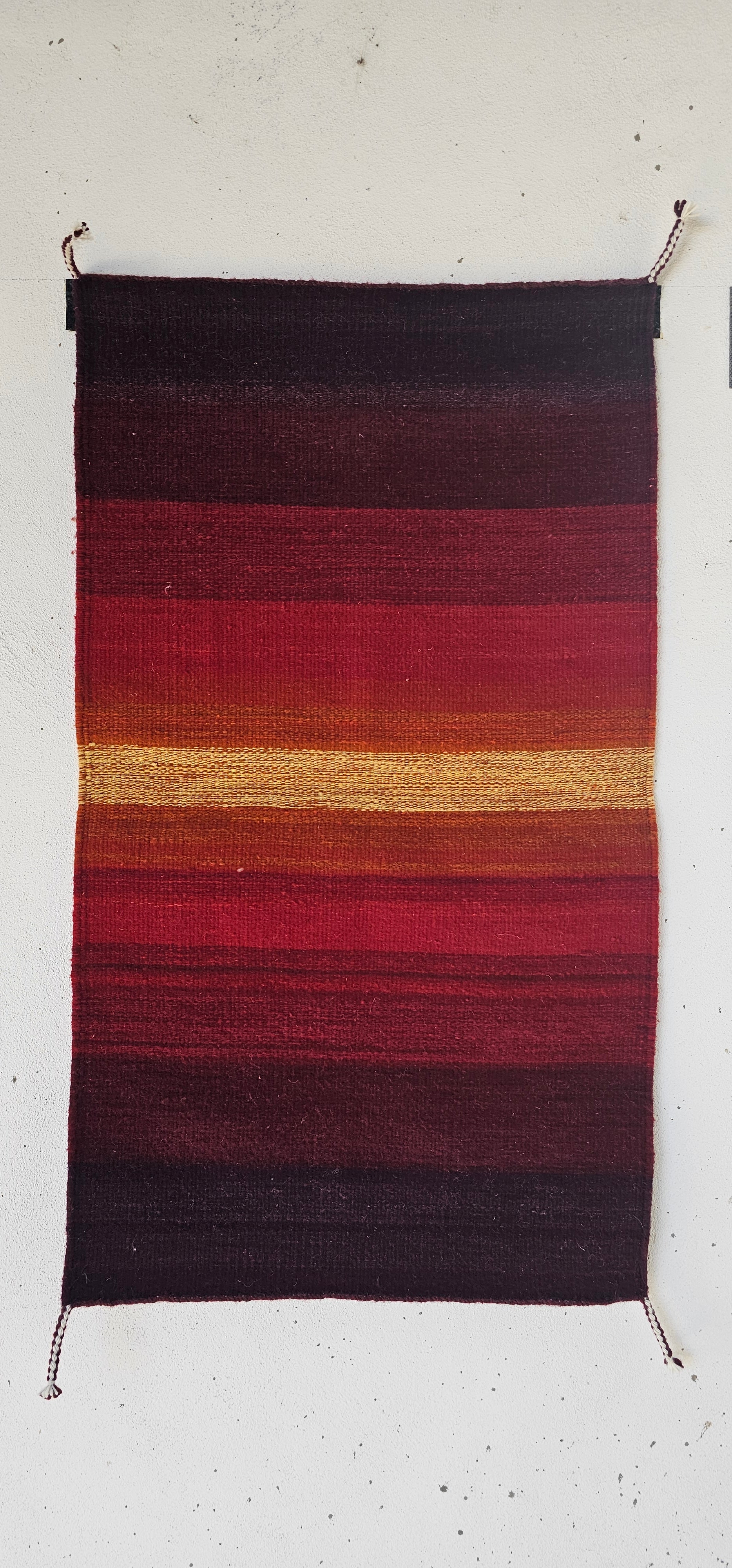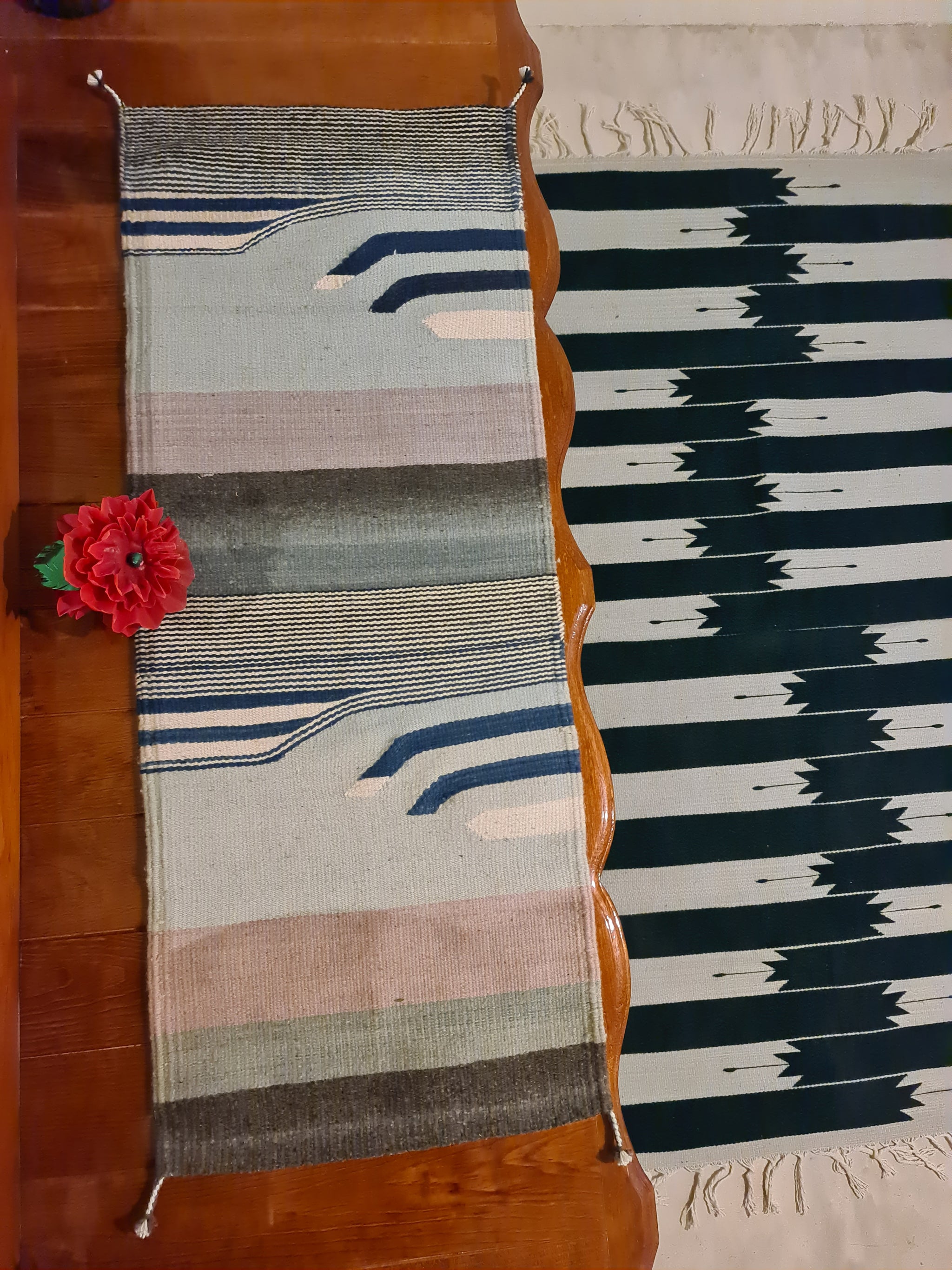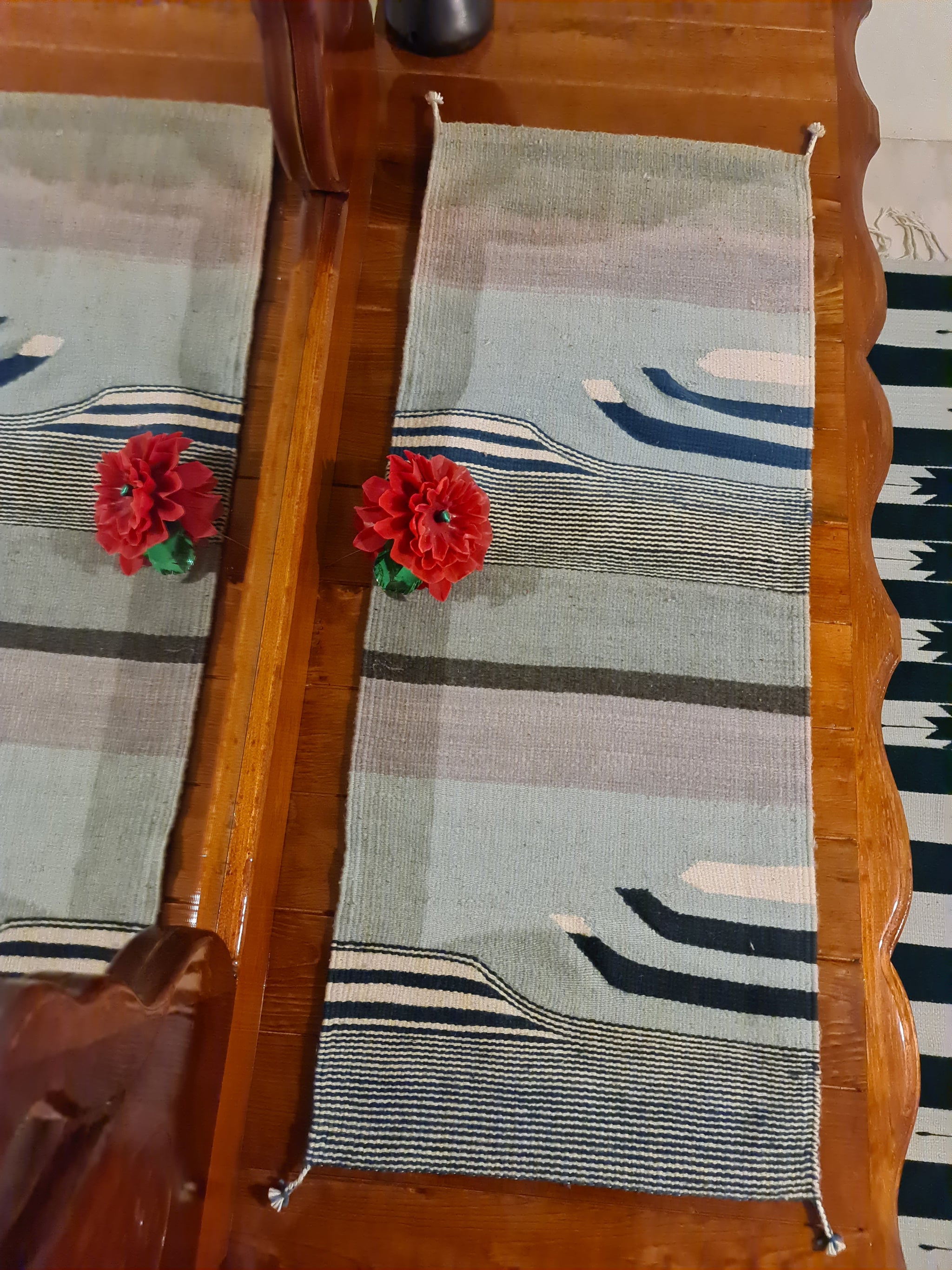Saak Le'e Shiì: midday solar blessings
$ 10,000.00
Master weaver: Maria Mendoza ContrerasSize: 60x100cm; 2x3ft
Materials and methods: Hemp and agave warp. Criollo sheep wool, agave fibers, and henequen--all dyed with natural dyes. Turkey feathers were added for ceremonial touch. This rug was woven on a Zapotec walking loom of the XVI century style using a 7 threads per inch reed.
Patterns and symbols: fire, smiles, fifth pointed solar cross and seeds of life. Our ancestors, the Benizaa people, the cloud people know as Zapotecs were adept astronomers. Daíin Beaz, the Sacred Jaguar Mountain, named Monte Albán because of its apparent resemblance to the Alban Hills in Italy, has very early evidence of a calendar system in the Zapotec culture that spread throughout the Anahuacan part of the continent (North America). The "J" building in the Sacred Jaguar Mountain is aligned with the direction at which the sun rises on the 8th of May and August 5th the sun passes right above our heads in this latitude of the world, those are the only two days in the year where the sun reaches the Zenit position and thus at midday at around 13:20 there are no shadows because the sun rays travel at a 90 degree angle. Our ancestors used this astronomical phenomenon to calibrate their calendar so they built a monument called the "P" building witha hole on top and a dark chamber to observe the passing of the sun through the Zenit in a magical way; at night one can also observe the passing of the pleiads on this opening.
The fifth pointed cross on this rug is a symbol that has been used to depict the movement of the sun in the sky but it also represents the balance of the four directions in our existence in this cardinal plane. The fifth direction is the up and down, the sky and the underworld, planes of existence that we move from at birth and death.
In our language, we say Saak Leé Shií, to say good midday, this greeting has the connotation of the blessings of the midday sun above our heads.
Share:
Related Items
Punta Cometa: fire tending
$ 4,600.00
60x100cm; 2x3ft Materials ans methods: criollo sheep wool hand dyed with colorfast aniline dyes using an exhaustive method. Handwoven on a Zapotec style loom of the 16th century adapted from European...
River Spirit
$ 3,110.00
Size: 40x100cm; 16in x 3.2ft Weaver: Zenaida Lopez from San Miguel del Valle Materials and Methods: Criollo sheep wool hand dyed by Leonor Lazo and Samuel Bautista using xiuhquilitl (indigo)...
Yaag Chei: tree of life
$ 5,500.00
Size: 60x100cm; 2x3ft Master Weaver: Samuel Bautista Lazo Materials and methods: criollo sheep wool spun in the mills of the Batalla family in Tianguistengo. Hand dyed yarns by Leonor Lazo using...




























